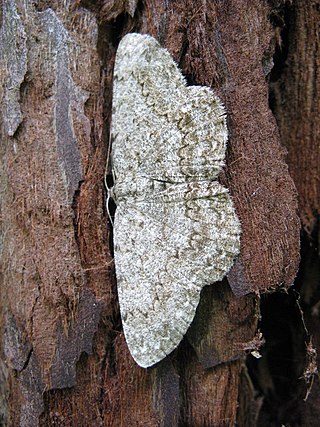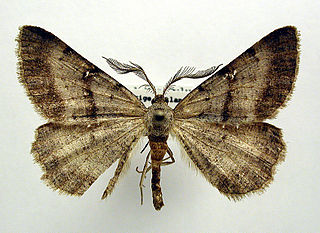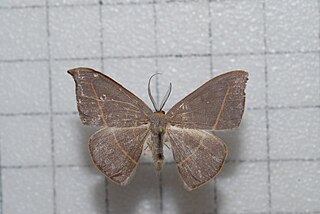
The Boarmiini are a large tribe of geometer moths in the Ennominae subfamily.

Menophra is a genus of moths in the family Geometridae erected by Frederic Moore in 1887.

Selidosema is a genus of moths in the family Geometridae first described by Jacob Hübner in 1823.

Menophra abruptaria, the waved umber, is a moth of the family Geometridae. The species was first described by Carl Peter Thunberg in 1792. It is found in south-western North Africa, southern Europe and Anatolia; in the north, it is found from England to Switzerland and south-western Germany. The wingspan is 36–42 mm. Adults are on wing from April to June. Normally, there is one generation per year, although there can be a partial second generation in summer.

Menophra taiwana is a moth of the family Geometridae. It is endemic to Taiwan.

Menophra nakajimai is a moth in the family Geometridae. It is found in Taiwan.

Microblepsis violacea is a moth in the family Drepanidae first described by Arthur Gardiner Butler in 1889. It is found in north-western and north-eastern India, Taiwan and China.








